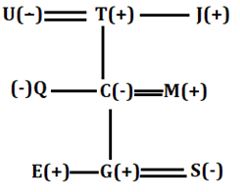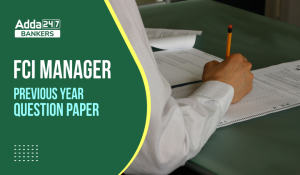Direction (1-5): Study the following information carefully and answer the given questions.
There are nine members in three generation family i.e., J, T, U, C, M, Q, E, S, and G. Among them there are 3 married couples and only four females. J is paternal uncle of Q. U has only 2 children. S is daughter-in-law of M and M is son-in-law of T. C is married to M. E and G are sons of C. E is not married. T is father-in-law of S’s father-in-law. T is married to U.
Q1. Who among the following person is father of Q?
(a) T
(b) U
(c) G
(d) S
(e) M
Q2. How is G related to T?
(a) Grandson
(b) Daughter
(c) Daughter in law
(d) Sister
(e) None of these
Q3. Which of the following is true about U?
(a) U is aunt of Q
(b) M is daughter of U
(c) J is sister of U
(d) S is grandson of U
(e) None of true
Q4. How S is related to son in law of T?
(a) Father
(b) Daughter in law
(c) Son
(d) Sister-in-law
(e) Wife
Q5. How M’s sister-in-law is related to J?
(a) Son in law
(b) Nephew
(c) Niece
(d) Daughter in law
(e) Sister-in-law
Directions (6-10): The following questions are based on the five three-digit numbers given below.
763 952 841 695 391
Q6. If all the digits in each of the numbers are arranged in increasing order within the number, then, which of the following number will become the lowest in the new arrangement of numbers?
(a) 391
(b) 695
(c) 763
(d) 841
(e) None of these
Q7. If all the numbers are arranged in ascending order from left to right then, which of the following will be the sum of all the three digits of the number which is 3rd from the right in the new arrangement?
(a) 18
(b) 16
(c) 14
(d) 11
(e) None of these
Q8. What will be the difference when the third digit of the 3rd lowest number is multiplied with the second digit of the highest number and third digit of the 2nd highest number is multiplied with the second digit of the lowest number?
(a) 4
(b) 8
(c) 9
(d) 5
(e) None of these
Q9. If the positions of the second and the third digits of each of the numbers are interchanged then, how many even numbers will be formed?
(a) None
(b) One
(c) Two
(d) Three
(e) Four
Q10. If one is subtracted to the second digit of each of the numbers and one is added to the third digit of each number then, how many numbers thus formed will be divisible by three in the new arrangement?
(a) None
(b) One
(c) Two
(d) Three
(e) Four
Directions (11-15): Following questions are based on the five three-digit numbers given below.
123 320 287 424 521
Q11. If all the digits in each of the numbers are arranged in ascending order within the number, then, which of the following number will become the highest in the new arrangement of numbers?
(a) 123
(b) 320
(c) 287
(d) 424
(e) 521
Q12. If all the numbers are arranged in descending order from left to right then, which of the following will be the product of 3rd digit of 2nd number from left and 3rd digit of 2nd number from right in new arrangement?
(a) 26
(b) 24
(c) 28
(d) 20
(e) 30
Q13. What will be the resultant when 3rd digit of the highest number is multiplied with the 2nd digit of the lowest number?
(a) 2
(b) 6
(c) 8
(d) 16
(e) 12
Q14. If the positions of the second and the third digits of each of the numbers are interchanged then, how many odd numbers will be formed?
(a) None
(b) One
(c) Two
(d) Three
(e) Four
Q15. If one is subtracted from each of the numbers then, how many numbers thus formed will be divisible by three?
(a) None
(b) One
(c) Two
(d) Three
(e) Four
Solutions
Solutions (1-5):
Sol.

S1. Ans. (a)
S2. Ans. (a)
S3. Ans. (e)
S4. Ans. (b)
S5. Ans. (c)
S6. Ans. (a)
S7. Ans. (b)
S8. Ans. (e)
S9. Ans. (c)
S10. Ans. (a)
S11. Ans. (c)
S12. Ans. (c)
S13. Ans. (a)
S14. Ans. (a)
S15. Ans. (b)





 FCI Assistant Grade 3 Previous Year Ques...
FCI Assistant Grade 3 Previous Year Ques...
 FCI Manager Previous Year Question Paper...
FCI Manager Previous Year Question Paper...
 FCI DV Admit Card 2023 Out, Download FCI...
FCI DV Admit Card 2023 Out, Download FCI...








